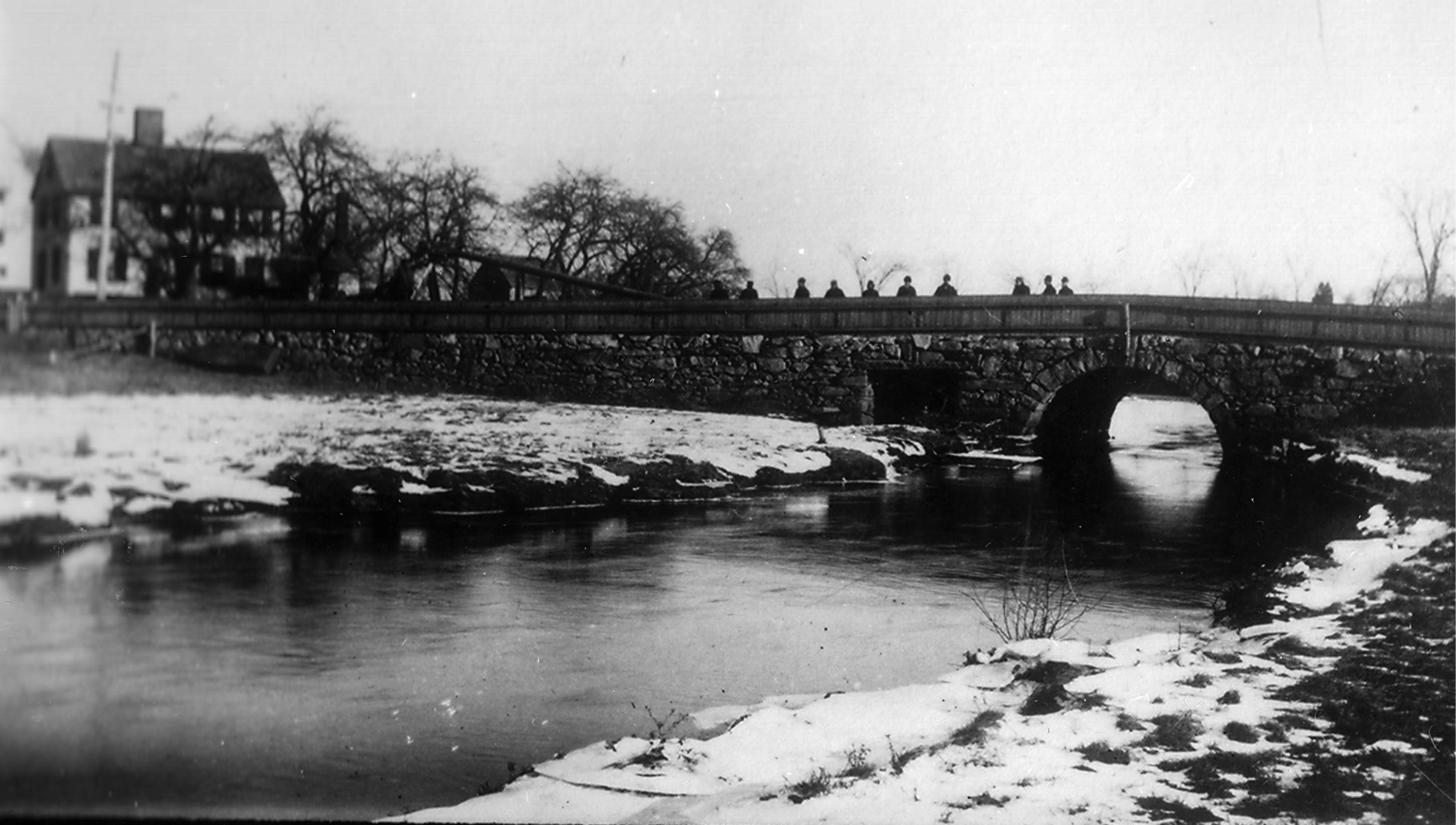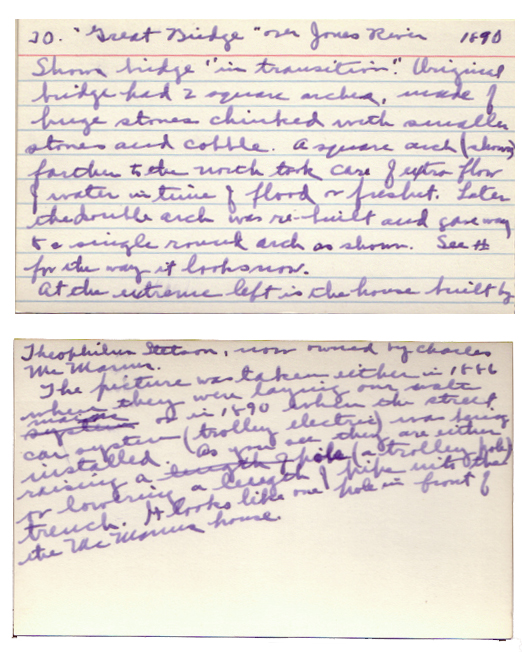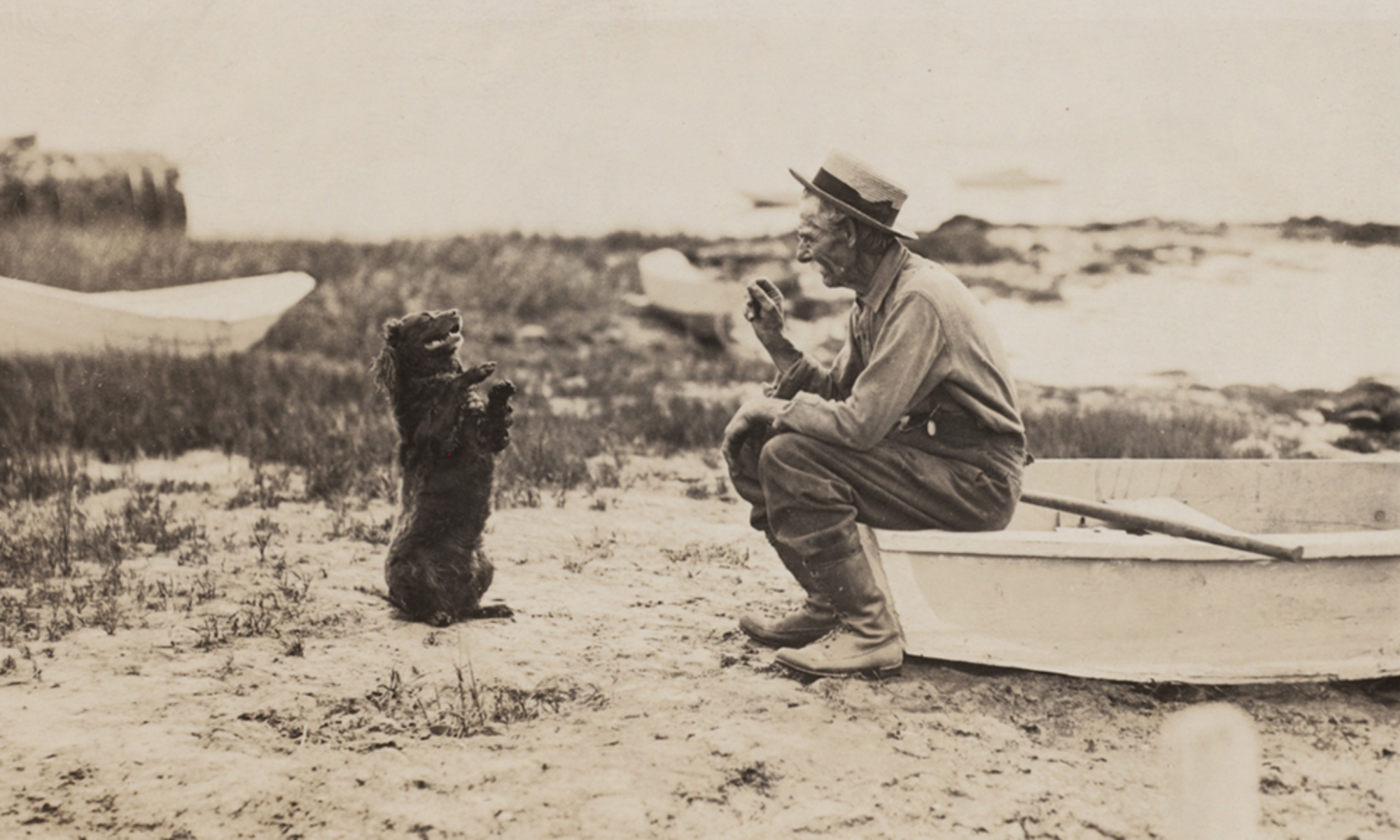Treasure in a Shoe Box
Among the treasures describing the history of Kingston that Emily Fuller Drew bequeathed to the community is a common ladies shoe box. The box itself probably qualifies as an antique on Ebay, but the real value lies in the contents: hundreds of 3″ X 5″ cards. On each is handwritten information describing the many lantern slides of the JRVHS, as well as the duplicate images in other Local History Room collections.
Here’s why it’s so wonderfully important.
First, take a look at lantern slide #30.

The actual slide itself has no information (the caption is added to the scan), but we have a small notebook called “A Library of Lantern Slides” that provides something more.

Informative, but very, very basic.
Now, the treasure:

And to bring this treasure to light, to make it relevant and useful, here’s a transcription, not only because reading Emily’s handwriting can be a challenge but also because the electronic text is searchable.
30. “Great Bridge” over Jones River, 1890. Shows bridge “in transition.” Original bridge had 2 square arches, made of huge stones chinked with smaller stones and cobble. A square arch (shown) farther to the north took care of extra flow water in time of flood or freshet. Later the double arch was rebuilt and gave way to a single round arch shown . See # for the way it looks now.
At the extreme left is the house built by Theophilus Stetson, now owned by Charles McManus.
The picture was taken either in 1866 when they were laying our water mains or in 1890 when the street car system (trolley electric) was being installed. As you see, they are either raising a pole (a trolley pole) or lowering a length of pipe into the trench. It looks like one pole in front of the McManus house.
Now, despite the new questions that spring to mind (what # does she mean? when is “now” given that the cards aren’t dated? 1866 or 1890?), we know a lot more than we did before, not just about this picture but about the bridge itself, and the house, and the projects Emily mentions.
The second major phase of our ongoing project to digitize our local history materials and put them online for everyone to explore is to find as many descriptive sources as possible, like the shoe box, and connect them electronically to scans of the photographs. In the first phase, every one of the more that 7,000 photographs, lantern slides and other pictorial materials was appropriately housed, individually numbered and basically described. Now, however, we need to draw electronic connections among the collections and show this wonderful tangled web of Kingston history online.
One great example is the database of buildings we are creating from the 1998 Kingston Historical Commission House Survey. The information sheets for each house fill nine big notebooks; each record has been annotated and connected to photographs and other collections and resources over the last decade. To this “modern” information, the Local History Room volunteers are transcribing Emily’s notes from the shoe box, along with other historic data, so that for many houses and places and people and events we will have comprehensive, centralized, searchable information to linked to pictures — the whole story of a bridge, a house, a place illustrated. This will be a long journey, but please come along for the ride!
